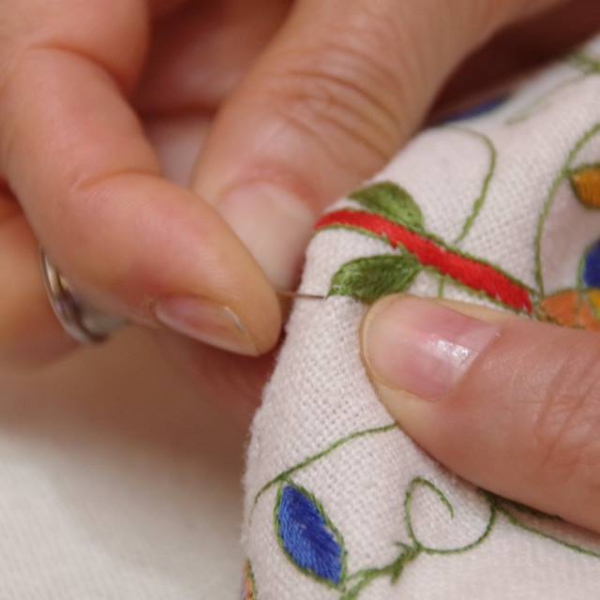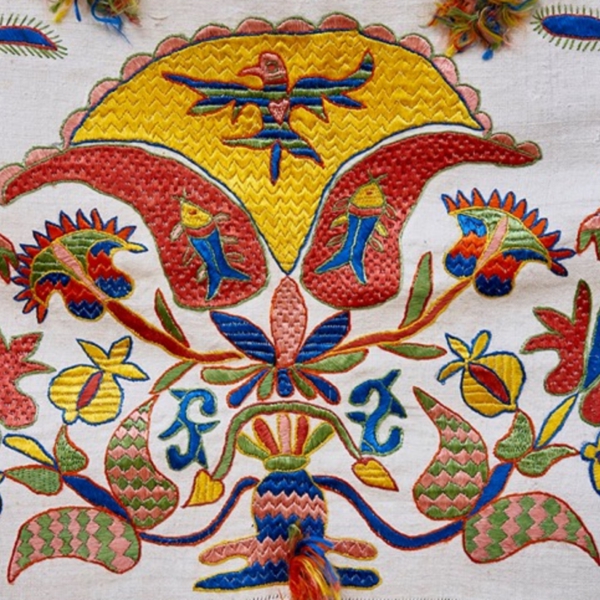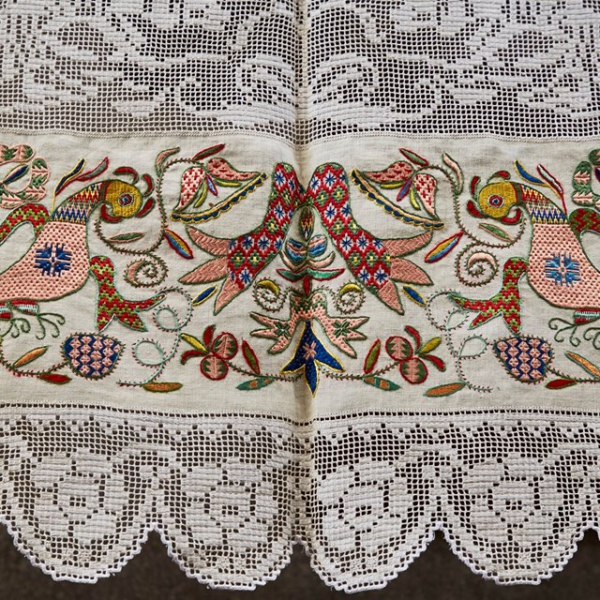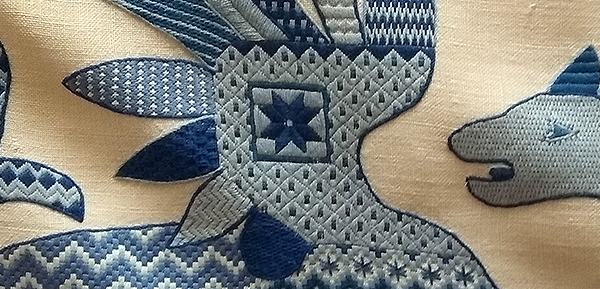FABRICS AND MATERIALS
In the Sierra de Francia, flax farming was one of the backbones of the family economies and its sale and export was closely connected with the growth and fame of mule drivers from that region.
Linen and wool were the basic materials used to obtain the fabric. Between the 11th and 17th centuries, the embroidery from the Sierra de Francia was sewn on linen canvas (taffeta fabric made of linen) using different techniques such as the “outline stitch”, the “counted-thread stitch” and the “satin stitch”. More than 30 types of stitches have been developed, depending on the length of the stitch, its inclination and the connection between the stitches.
Until the 17th century wool yarn and worsted yarn were used though they were later replaced by silk yarn. Moline cotton embroidery thread, which has appeared more recently, and silk thread are the most commonly used materials today.
The main different fabrics used for Serrano Embroidery were created in a traditional horizontal loom called a low warp loom. Until the 19th century, looms were manually operated and there were around 40 looms in La Alberca and as many others located in the rest of the villages in the region. At the beginning of 20th century, the last manual looms disappeared and industrial fabric made with other fibres began to be used.




